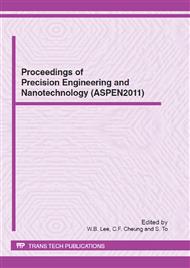p.402
p.408
p.414
p.420
p.426
p.431
p.437
p.443
p.447
Roll Stability Recovery Performance of Underwater Bluff-Body with Tilting Angle Variations
Abstract:
In the present study, we experimentally investigated the roll stability recovery performance of a vehicle at various tilting angles. The vehicle was ultimately targeted to contain a velocity-field measurement system in underwater conditions, which should confirm stationary buoyancy during measurement. We employed two small gear-rack ax mountings on a weighted mass as the actuating system inside the bluff-body. Speed and movement were feedback controlled by the activating electronic motor system. The feedback algorithm used tilting action signals from an inclinometer sensor installed in the central region of the vessel shell. As a result, the bluff-body vessel effectively recovered self-stabilizing positions against the tilting action.
Info:
Periodical:
Pages:
426-430
Citation:
Online since:
June 2012
Authors:
Price:
Сopyright:
© 2012 Trans Tech Publications Ltd. All Rights Reserved
Share:
Citation:


